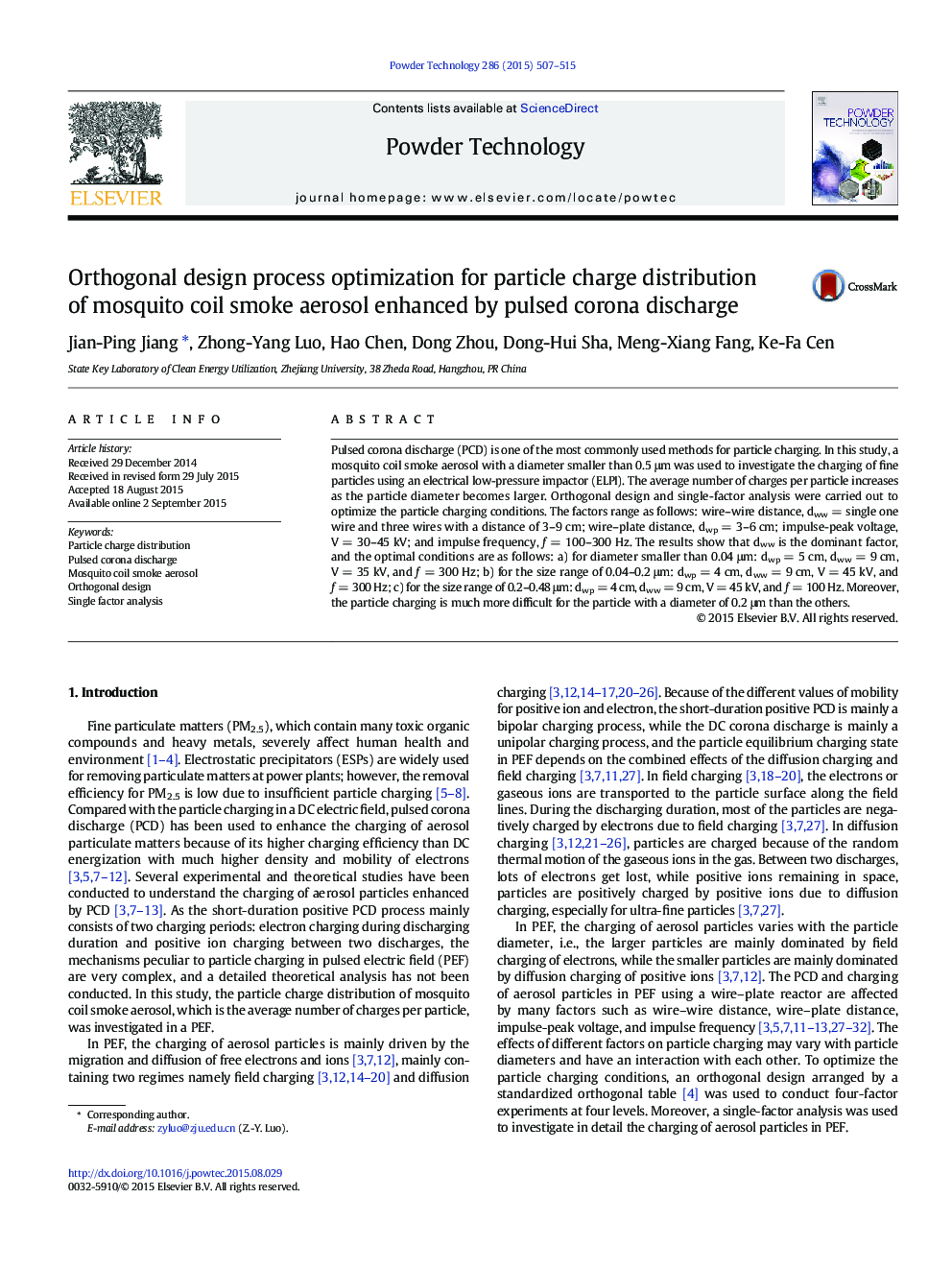| Article ID | Journal | Published Year | Pages | File Type |
|---|---|---|---|---|
| 235254 | Powder Technology | 2015 | 9 Pages |
•Optimizing particle charging with orthogonal and single-factor analysis in the PCD•The wire–wire distance is the dominant factor for particle charging in the PCD.•The optimal conditions of dww, dwp, f, and V change with the particle diameter.•The particle charging is more difficult for the diameter of 0.2 μm than the others.
Pulsed corona discharge (PCD) is one of the most commonly used methods for particle charging. In this study, a mosquito coil smoke aerosol with a diameter smaller than 0.5 μm was used to investigate the charging of fine particles using an electrical low-pressure impactor (ELPI). The average number of charges per particle increases as the particle diameter becomes larger. Orthogonal design and single-factor analysis were carried out to optimize the particle charging conditions. The factors range as follows: wire–wire distance, dww = single one wire and three wires with a distance of 3–9 cm; wire–plate distance, dwp = 3–6 cm; impulse-peak voltage, V = 30–45 kV; and impulse frequency, ƒ = 100–300 Hz. The results show that dww is the dominant factor, and the optimal conditions are as follows: a) for diameter smaller than 0.04 μm: dwp = 5 cm, dww = 9 cm, V = 35 kV, and ƒ = 300 Hz; b) for the size range of 0.04–0.2 μm: dwp = 4 cm, dww = 9 cm, V = 45 kV, and ƒ = 300 Hz; c) for the size range of 0.2–0.48 μm: dwp = 4 cm, dww = 9 cm, V = 45 kV, and ƒ = 100 Hz. Moreover, the particle charging is much more difficult for the particle with a diameter of 0.2 μm than the others.
Graphical abstractFigure optionsDownload full-size imageDownload as PowerPoint slide
